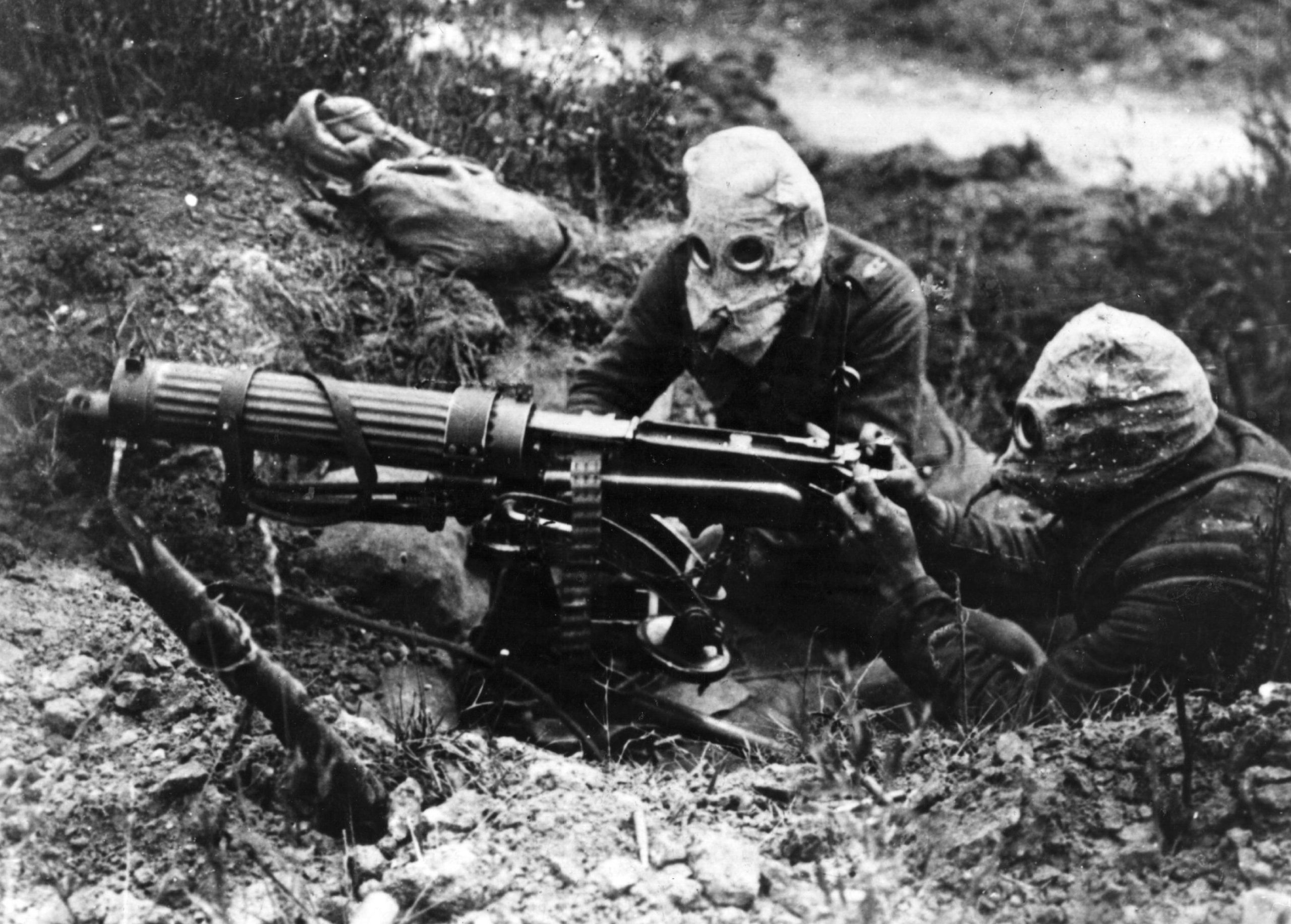The Use of Chemical Weapons and the Survivors
Chemical weapons come in a number of forms and, despite being banned internationally, have taken the lives of thousands of innocent people. Chemical weapons have been used both by states and by terrorist organizations as a means of blindly killing thousands. Future chemical weapon threats are associated with terrorist groups and cult-like groups that are able to develop chemical weapons on their own. Chemical weapons survivors are left with long-lasting physical and mental conditions that affect their ability to live life as they once did.
- Amnesty International
Links to additional relevant NGOs
- http://gsinstitute.org/ngo-links
- http://spia.uga.edu/departments-centers/center-for-international-trade-and-security-cits/
- http://www.nti.org/
- http://www.wisconsinproject.org/
- https://www.opcw.org/special-sections/victims-of-chemical-weapons-network/
Related Books
- Lavoy, P. R., Sagan, S. D., & Wirtz, J. J. (Eds.). (2000). Planning the Unthinkable: how new powers will use nuclear, biological, and chemical weapons. Cornell University Press. Book.
- Tucker, J. B. (Ed.). (2000). Toxic terror: Assessing terrorist use of chemical and biological weapons. MIT Press. Book
Sources to Consult
Ideas for helping out with the issue
- The Chemical Weapons issue can be assisted with in prevention, minimization, and relief.
- An International convention where the issue of chemical weapons (in conjunction to other weapons) to eliminate it’s use and possible existence due to physical and psychological harm to the survivors.
ANNOTATED BIBLIOGRAPHY
ABC News. (2017). Hell on Earth: Horrific aftermath of alleged Syria chemical attack. YouTube. April 5th, 2017. https://www.youtube.com/watch?v=OI3-0xIcvgI
-A video showing the aftermath of chemical weapon usage in Syria.
Blake, J., & Mahmud, A. (2013). A Legal Red Line: Syria and the Use of Chemical Weapons in Civil Conflict. UCLA L. Rev. Discourse, 61, 244. Law Review/Article.
-This article finds that chemical weapons are clearly banned in international conflicts, but seeks more clarity on the use of chemical weapons in all armed conflicts.
The Body. Song of Sarin, the Brave. All the Waters of the Earth turn to Blood. Song. https://genius.com/The-body-song-of-sarin-the-brave-lyrics
-Lyrics inspired by poems regarding chemical weapons:
Prepare Sarin
Inhale Sarin
History teaches
But they will not forget what we have done
The strength to shape and make
To justify love and murder
Oh, my beautiful Sarin the Brave
Bolton, J. R. (2002). Beyond the Axis of Evil: Additional Threats from Weapons of Mass Destruction. Speech/Lecture
-Speech in 2002 outlines the importance of identifying terrorist groups as the most dangerous users of WMD and chemical weapons.
Clinton, P. B. (1993). Chemical Weapons Convention. US Department of State Dispatch, 4, 849-851. Letter Addressing Congress from President Clinton
-President Bill Clinton addressing the need for the U.S. to take action in stopping the use and acquisition of chemical weapons by others.
Coupland, R. M. (2003). Incapacitating chemical weapons: a year after the Moscow theatre siege. The Lancet, 362(9393), 1346. Academic Article
-On Oct 26 last year a knockout gas was pumped into a Moscow theatre to end a siege and free around 700 hostages; 120 people were killed by the gas.1,2 The gas is thought to be an opioid from the fentanyl family and may have been mixed with another anaesthetic.1,3 Its dispersal was the first time that a therapeutic agent has been used as a weapon in a tactical situation.
Croddy, E. (2002). Chemical and Biological Warfare: A Comprehensive Survey for the Concerned Citizen. Springer. p. 131.
-The novel outlines the history of chemical weapons usage and how concerns have evolved to be focused on terrorist groups.
Diab, M. Z. (1997). Syria’s chemical and biological weapons: Assessing capabilities and motivations. The Nonproliferation Review, 5(1), 104-111. Academic Article
-Undoubtedly, Syria’s military motivations to acquire chemical weapons were strengthened considerably when Israel invaded Lebanon in 1982 and engaged the Syrian forces stationed there with near-disastrous consequences for the Syrian side had the clashes not stopped after three days.29
Dworkin, J. Prescott, M. (2008). The Long-Term Psychological Impact of a Surprise Chemical Weapons Attack on Civilians in Halabja, Iraqi Kurdistan. The Journal of Nervous and Mental Disease. Volume 196. 772-775. Academic Article
-War and human rights abuses contribute to increased prevalence of post traumatic stress (PTS) disorder and low social functioning among populations affected. There is relatively little evidence, however about the long-term mental health impact of war on general populations. We examined the prevalence of PTS symptoms and poor social functioning in Halabja, Iraqi Kurdistan, 18 years after a chemical attack on civilians in that town. We systematically sampled 291 persons representative of the population of Halabja from the city emergency department and 4 outpatient clinical sites. PTS symptoms and poor social functioning were common. After adjustment for covariates, female gender, older age, and cumulative exposure to multiple traumas, all were associated with higher PTS scores and worse social functioning. Exposure to human rights abuses and warlike conditions seem to continue to be risks for psychiatric and social dysfunction even decades after the initial incident.
Evison, D., Hinsley, D., & Rice, P. (2002). Regular review: chemical weapons. BMJ: British Medical Journal, 324(7333), 332. Journal/Images
-Poisoning with many chemical agents, especially nerve agents, can be treated when diagnosed early.
-Protective equipment must be worn if there is suspicion that chemical agent remains in the local environment.
Harris, J. C. (2005). Gassed. Archives of general psychiatry, 62(1), 15-18.
-Website with three works of art related to the use of mustard gas during WWI
Hashemian, F., Khoshnood, K., Desai, M. M., Falahati, F., Kasl, S., & Southwick, S. (2006). Anxiety, depression, and posttraumatic stress in Iranian survivors of chemical warfare. JAMA, 296(5), 560-566.
-Scientific study on a group of kurdish people that were exposed to chemical weapons in the 1980-1988 Iran-Iraqi War. Study finds that massive proportions of people exposed to high levels of chemical weapons or warfare still have anxiety and PTSD.
Lavoy, P. R., Sagan, S. D., & Wirtz, J. J. (Eds.). (2000). Planning the Unthinkable: how new powers will use nuclear, biological, and chemical weapons. Cornell University Press. Book.
-Describes why and how powers are acquiring weapons of mass destruction.
Lifton, R. J. (2007). Destroying the world to save it. In Voices of Trauma (pp. 59-86). Springer US.
-Excerpt from book listed above. Describes Japanese religious cult that believed that the world needed to be destroyed in order to be saved. Cult released Sarin in Japanese Subways killing 11 and injuring 5000
Nikitin, M. B. D., Kerr, P. K., & Feickert, A. (2013, September). Syria’s chemical weapons: issues for congress. LIBRARY OF CONGRESS WASHINGTON DC CONGRESSIONAL RESEARCH SERVICE. Congressional Report
-Syria has produced, stored, and weaponized chemical agents, but it remains dependent on foreign suppliers for chemical precursors. The regime of President Bashar al Asad possesses stocks of nerve (sarin, VX) and blister (mustard gas) agents, possibly weaponized into bombs, shells, and missiles. The government also has associated production facilities.
Reutter, S. (1999). Hazards of chemical weapons release during war: new perspectives. Environmental Health Perspectives, 107(12), 985. Research Article
-Explains that most chemical weapons are actually liquids and not gases. Then talks about their creation and why there are concerns with their usage.
Shoham, D. (1998). Chemical and biological weapons in Egypt. The Nonproliferation Review, 5(3), 48-58. Academic Article in Journal
-Origins of chemical weapons in Egypt and how coordination with Iraq allowed for their development in Egypt.
Timmerman, K. R. (1992). Weapons of Mass Destruction: The Cases of Iran, Syria, and Libya. Simon Wiesenthal Center. Article
-Details the groups and chemicals used in the cases listed in the title. Attempts to approach motive in explaining the incidents.
Tucker, J. B. (Ed.). (2000). Toxic terror: Assessing terrorist use of chemical and biological weapons. MIT Press. Book
-Examines different instances where chemical weapons were used and then attempts to identify a new group of terrorists that specialize in chemical weapons for their attacks.
Warrick, J. (2013). More than 1,400 killed in Syrian chemical weapons attack, US says. Washington Post, 30. News Article.
-News Article describing event in which Syrians were killed via a chemical attack. Describes the symptoms of being affected by the gas and who was suspected of carrying out the attack.
Testimonials
http://www.guampdn.com/story/news/2017/02/08/two-more-veterans-allege-personally-spraying-agent-orange-both-air-force-and-navy-bases/97619046/
-Although not a direct testimonial from a survivor of Agent Orange, this tells of two veteran’s experience and with the chemical weapons used in Vietnam.
http://globalhumanrightsdirect.com/ghrd-tools/human-rights-testimonials/hr-books/item/we-crossed-a-bridge-and-it-trembled-voices-from-syria?highlight=WyJzeXJpYSIsInN5cmlhJ3MiXQ==
-A collection of wartime narratives from Syria



